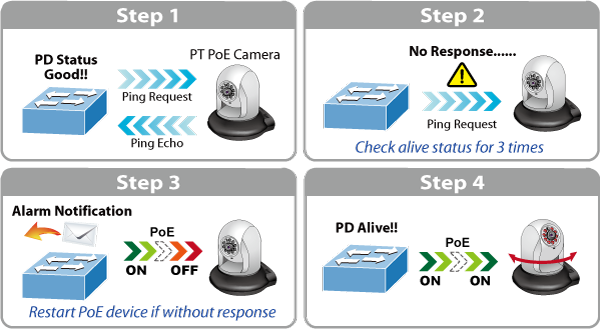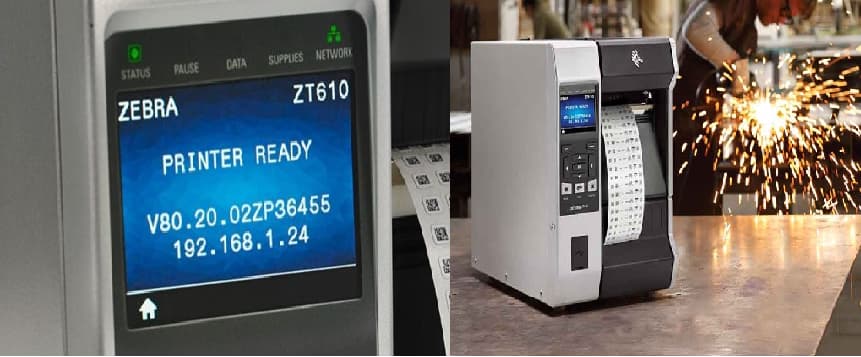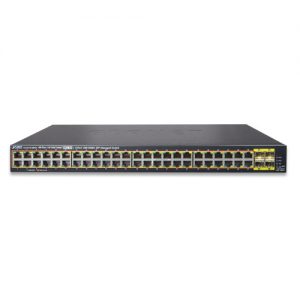Cost-optimized Managed PoE+ Switch with Advanced L2/L4 Switching and Security
PLANET GS-4210-24P2S is an ideal Gigabit PoE Switch which provides cost-effective advantage to local area network and is widely accepted in the SMB office network. It offers intelligent Layer 2 data packet switching and management functions, friendly web user interface and stable operation. The model complies with IEEE 802.3at Power over Ethernet Plus (PoE+) at an affordable price. The GS-4210-24P2S is equipped with 24 10/100/1000BASE-T Gigabit Ethernet ports and 2 100/1000BASE-X SFP interfaces with inner power system. Its 24 Gigabit Ethernet ports integrated with 802.3at PoE+ injector function on all ports. It offers a rack-mountable, affordable, safe and reliable power solution for SMBs deploying Power over Ethernet networks. Or requiring enhanced data security and network traffic management.

Built-in Unique PoE Functions for Powered Devices Management
As the PoE managed switch for surveillance, wireless and VoIP networks, the GS-4210-24P2S features special PoE management functions:
■ PD alive check
■ Scheduled power recycling
■ PoE schedule
■ PoE usage monitoring
Intelligent Powered Device Alive Check
Planet GS-4210-24P2S can be configured to monitor connected PD (powered device) status in real time via ping action. Once the PD stops working and responding, the GS-4210-24P2S will resume the PoE port power and bring the PD back to work. It will greatly enhance the network reliability through the PoE port resetting the PD’s power source and reducing administrator management burden.

Scheduled Power Recycling
The GS-4210-24P2S allows each of the connected PoE IP cameras or PoE wireless access points to reboot at a specific time each week. Therefore, it will reduce the chance of IP camera or AP crash resulting from buffer overflow.

PoE Schedule for Energy Saving
Under the trend of energy saving worldwide and contributing to environmental protection, the GS-4210-24P2S can effectively control the power supply besides its capability of giving high watts power. The “PoE schedule” function helps you to enable or disable PoE power feeding for each PoE port during specified time intervals and it is a powerful function to help SMBs or enterprises save power and money. It also increases security by powering off PDs that should not be in use during non-business hours.

PoE Usage Monitoring
Via the power usage chart in the web management interface, the GS-4210-24P2S enables the administrator to monitor the status of the power usage of the connected PDs in real time. Thus, it greatly enhances the management efficiency of the facilities.
IPv6/IPv4 Dual Stack
Supporting both IPv6 and IPv4 protocols, the GS-4210-24P2S helps the SMBs to step in the IPv6 era with the lowest investment as its network facilities need not be replaced or overhauled if the IPv6 FTTx edge network is set up.
Robust Layer 2 Features
The GS-4210-24P2S can be programmed for advanced switch management functions such as dynamic port link aggregation,
- 802.1Q VLAN and Q-in-Q VLAN,
- Multiple Spanning Tree protocol (MSTP),
- loop and BPDU guard,
- IGMP snooping, and MLD snooping.
Via the link aggregation, the GS-4210-24P2S allows the operation of a high-speed trunk to combine with multiple ports such as a 4Gbps fat pipe, and supports fail-over as well. Also, the Link Layer Discovery Protocol (LLDP) is the Layer 2 protocol included to help discover basic information about neighboring devices on the local broadcast domain.
Efficient Traffic Control
The GS-4210-24P2S is loaded with robust QoS features and powerful traffic management to enhance services to business-class data, voice, and video solutions. The functionality includes broadcast/multicast/unicast storm control, per port bandwidth control, 802.1p/CoS/IP DSCP QoS priority and remarking. It guarantees the best performance at VoIP and video stream transmission, and empowers the enterprises to take full advantages of the limited network resources.
Enhanced and Secure Management
For efficient management, the GS-4210-24P2S is equipped with console, web, telnet and SNMP management interfaces. With the built-in web-based management interface, the GS-4210-24P2S offers an easy-to-use, platform-independent management and configuration facility. By supporting standard Simple Network Management Protocol (SNMP), the switch can be managed via any standard management software. For text-based management, the switch can be accessed via telnet and the console port. Moreover, the GS-4210-24P2S offers secure remote management by supporting SSH, HTTPS and SNMPv3 connections which encrypt the packet content at each session.
Powerful Security
PLANET GS-4210-24P2S offers comprehensive IPv4/IPv6 Layer 2 to Layer 4 Access Control List (ACL) for enforcing security to the edge. It can be used to restrict network access by denying packets based on source, destination IP address. TCP/UDP ports or defined typical network applications. Its protection mechanism also comprises 802.1X port-based user and device authentication. Which can be deployed with RADIUS to ensure the port level security and block illegal users. With the protected port function, communication between edge ports can be prevented to guarantee user privacy. Furthermore, Port security function allows to limit the number of network devices on a given port.
Advanced Network Security
Planet GS-4210-24P2S also provides DHCP snooping, IP source guard. Dynamic ARP inspection functions to prevent IP snooping from attack and discard ARP packets with invalid MAC address. The network administrators can now construct highly-secure corporate networks with considerably less time and effort than before.
Flexible Extension Solution
The two mini-GBIC slots built in the GS-4210-24P2S are compatible with the 100BASE-FX/1000BASE-SX/LX SFP (Small Form-factor Pluggable) fiber transceiver to uplink to backbone switch and monitor center in long distance. The distance can be extended from 550 meters to 2km (multi-mode fiber). To 10/20/30/40/50/60/70/120 kilometers (single-mode fiber or WDM fiber). They are well suited for applications within the enterprise data centers and distributions.
















 0909.300.186
0909.300.186 


